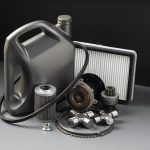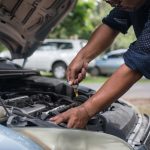How To Jumpstart A Car
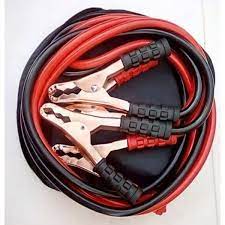
Jumpstarting a car is using a charged external power source, often the battery of another working vehicle, to provide a temporary electrical boost to a vehicle with a dead car battery, allowing the engine to start. This technique is often used in emergencies where a car’s battery has lost its charge or a car won’t start, allowing the stranded vehicle to recharge, and restore regular operation. If your car makes a startup noise when you turn the key in the ignition but do not fully engage, the battery may need the extra boost jumpstarting gives. In this guide, we will teach you proactive steps to take the next time your car won’t start.
Jumpstarting Kit
- A pair of working Jumper Cables or Jump Leads (Purchase one here)
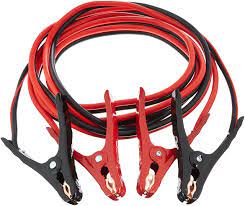
- Safety gloves and safety glasses(Optional but not unnecessary)
- Donor vehicle with a fully charged car battery: A donor car is used to offer a brief electrical boost to the dead car battery. Electrical energy is transferred by connecting jumper wires or jump cables between the charged battery of the donor car and the dead battery of the stranded vehicle, allowing the dead car battery to start and run again.
Jumpstarting Safety Precautions:
- Wear safety equipment, such as gloves and goggles, to protect yourself from any sparks during jumpstarting.
- Handle jumper cables with caution, making sure they don’t come into contact with one other to avoid sparks and for safety. Do not jump start a battery that looks damaged, avoid using jump leads that are damaged, and stop using jumper cables if they get hot.
- Double-check and adhere to correct cable polarity to avoid damaging electrical systems in both vehicles.
- Turn off the engines of both vehicles before connecting or removing cables, and turn on the car engine of the donor vehicle only after a proper connection is established.
- Follow the manufacturer’s guidelines for specific jumpstarting procedures, reducing the risk of damage and ensuring a successful jumpstart.
- The donor vehicle is in a spot where jump leads can easily reach the dead battery.
Step-by-Step Guide:
Step 1: Position the cars
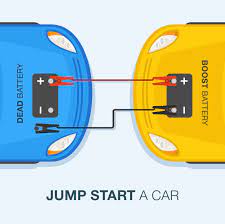
- To ensure ease of access, park the donor vehicle close to, but not touching, the vehicle with the dead battery.
- Both cars should be in “Park” or “Neutral”, and the ignition should be switched off.
Step 2: Identify and Connect Battery Terminals
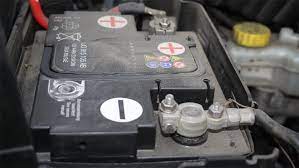
Locate the positive (+) and negative (-) terminals on both the dead battery and donor battery. Connect one end of the red jump lead or jumper cables to the positive (+) terminal to the flat battery’s positive (+) terminal, and the other end to the positive terminal of the donor battery. Connect one end to the negative terminal of the donor battery. Connect the other end to an earthing point (unpainted metal on the engine block) away from the flat battery and fuel system.
Step 3: Start the Donor Vehicle
- Start the donor vehicle and let it run for a few minutes.
Step 4: Start the Dead Vehicle
- Attempt to start the engine of the vehicle with the dead battery. If it doesn’t start, wait a few more minutes and try again. Leave both cars to run for around 10 minutes.
Step 6: Disconnect the Cables
In Reverse Order:
- Start with turning off both car engines. Carefully disconnect the negative (black) cable from the previously dead vehicle.
- Then remove the negative (black) cable from the donor vehicle.
- Next, remove the positive (red) cable from the donor vehicle.
- Disconnect the positive (red) cable from the previously dead vehicle. Ensure the leads don’t touch one another, or either car, as you remove them.
- Finally, restart your car.
Common Issues and Troubleshooting:
- If the dead vehicle doesn’t start after a few attempts, check the cable connections, ensuring they are secure and properly fastened.
- If the jumpstart is successful, drive the vehicle with the previously flat battery for at least 15-20 minutes to recharge and boost the battery.
Preventive Measures:
- Consider having a professional inspect the vehicle’s charging system and battery if jumpstarting becomes a frequent necessity. Seek the expertise of a professional mechanic to diagnose and resolve complex electrical or charging system problems.
- Identify and correct any underlying issues causing frequent battery problems, such as a broken alternator or parasitic drain.
- Ensure routine battery checks and regular maintenance, such as cleaning terminals and securing connections, to extend battery life and lower the likelihood of recurring issues.
Following these steps carefully ensures a safe and effective jumpstart, returning the dead battery to life.
Know When To Replace Your Car Battery
- Consider replacing a car battery every 3-7 years, as age diminishes its ability to hold a charge effectively. Also, consider changing a car battery when it’s showing signs of deterioration.
- Replace the battery if the engine cranks slowly, the lights flicker, or the vehicle refuses to start consistently.
- During routine maintenance, have a mechanic inspect the battery and replace the battery if voltage testing shows a deterioration in performance.
Conclusion:
Jumpstarting a car is essential for quickly boosting a dead battery, enabling the vehicle to start without needing towing or professional assistance. Safe jumpstarting is critical to avoiding injuries and electrical system damage, emphasizing the need to follow the right methods. Following safety protocols allows a successful jumpstart while minimizing dangers, encouraging a safe and efficient solution to a dead battery issue.


